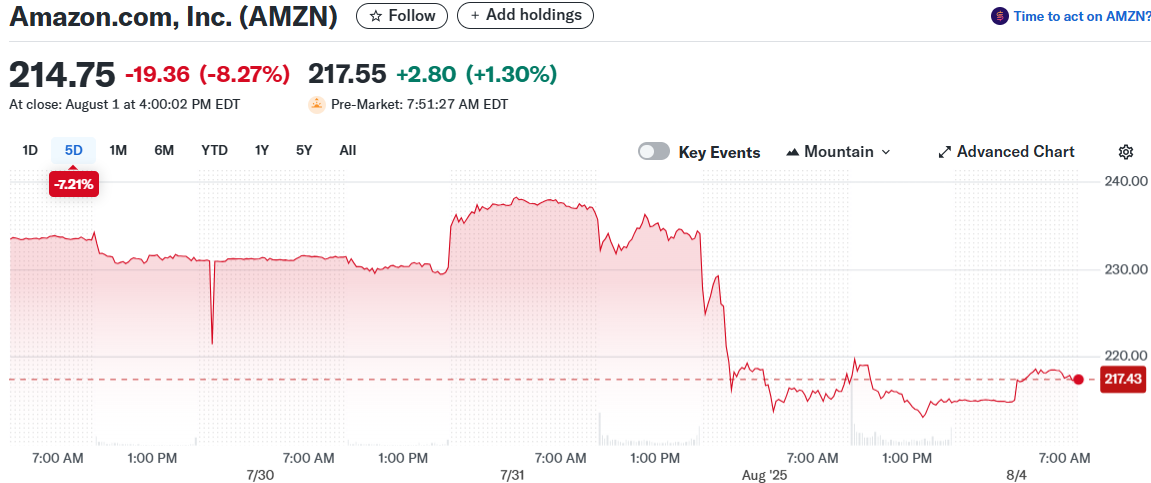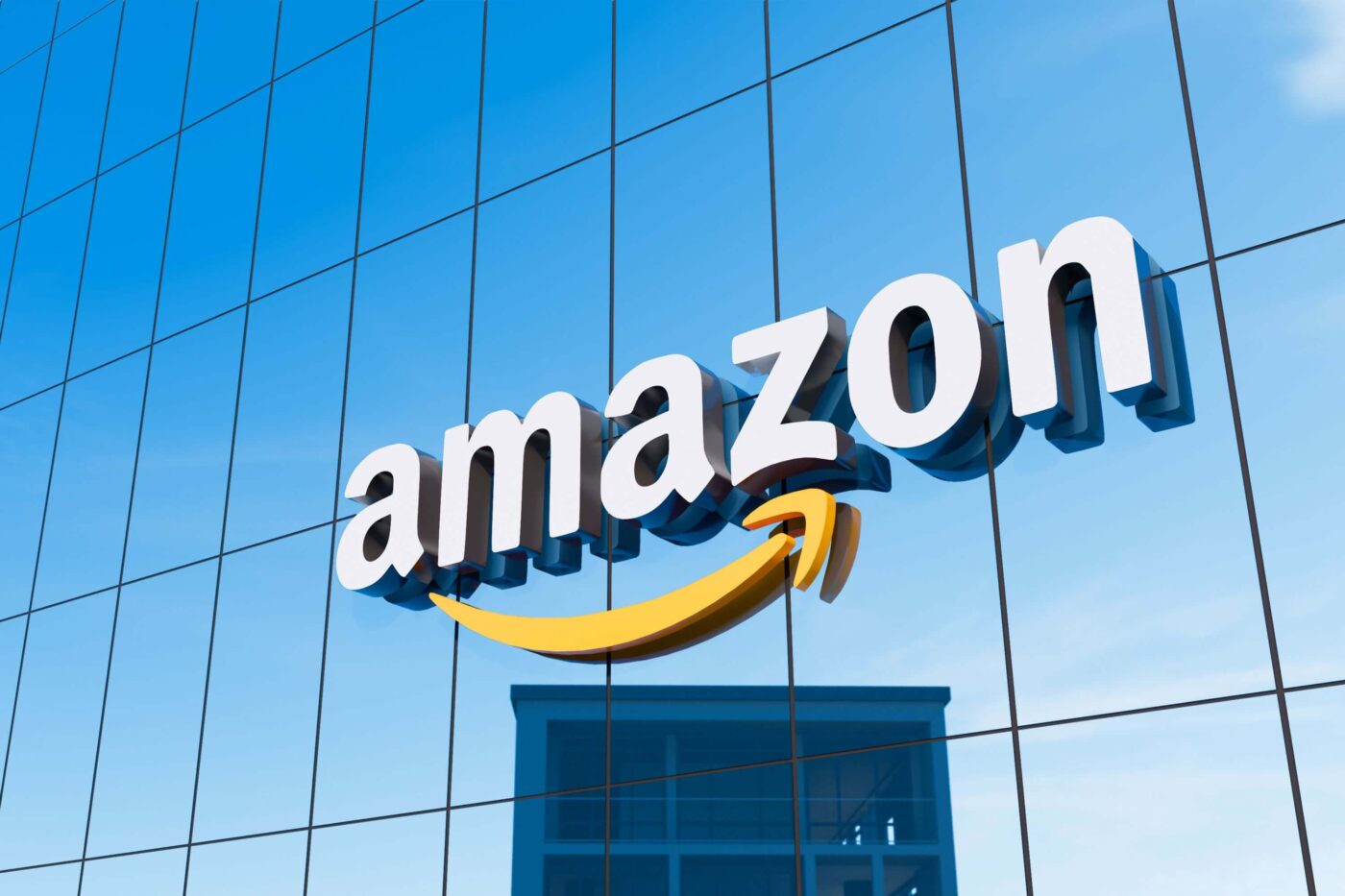TLDR
- Amazon stock dropped 7% after disappointing AWS guidance for Q3, with expected operating income of $15.5-$20.5 billion versus Wall Street’s $19.5 billion expectation
- Jim Cramer defended Amazon on social media, calling the market reaction overblown and stating “AWS is fine”
- Amazon beat Q2 earnings expectations with $1.68 EPS on $167.7 billion revenue, surpassing estimates of $1.33 EPS on $162.2 billion revenue
- Analysts worry AWS is lagging behind cloud rivals in AI adoption and growth opportunities
- Prime Day expanded to four days and generated nearly $24 billion in sales, marking Amazon’s largest sales event ever
Amazon stock took a beating Friday morning, falling 7% at the open after the e-commerce giant provided lower-than-expected guidance for its cloud computing division. The selloff came despite the company beating earnings expectations across most metrics.

The stock decline followed Amazon’s second-quarter earnings call Thursday evening. Shares had already dropped more than 8% in pre-market trading before recovering slightly during regular hours.
Jim Cramer jumped to Amazon’s defense early Friday morning. The “Mad Money” host posted on X that investors were overreacting to what he called “real misunderstood moments” during the earnings call.
“I know Amazon will be down today… but there were some real misunderstood moments on the call. AWS is fine!!! Stop the crying,” Cramer wrote. His comments came as retail sentiment on Stocktwits remained in “extremely bullish” territory.
I know Amazon will be down today… but there were some real misunderstood moments on the call. AWS is fine!!! Stop the crying
— Jim Cramer (@jimcramer) August 1, 2025
Amazon actually delivered solid second-quarter results. The company posted earnings per share of $1.68 on revenue of $167.7 billion. Wall Street had expected $1.33 EPS on $162.2 billion in revenue.
But investors focused on the disappointing AWS guidance instead. Amazon projected operating income for its cloud division between $15.5 billion and $20.5 billion for the third quarter. Analysts had been expecting $19.5 billion.
AWS Concerns Mount
The guidance miss has analysts worried about Amazon’s position in the cloud computing race. Cantor Fitzgerald analysts noted the “lag” in AWS growth compared to competitors could become a bigger problem as AI adoption accelerates.
RBC Capital echoed those concerns. The firm pointed to slower AWS growth versus rivals, missed margins, and management commentary that failed to address structural issues with the cloud business.
Amazon’s cloud division has been facing increased competition from Microsoft Azure and Google Cloud. Both rivals have been gaining market share in recent quarters.
The company has been investing heavily in AI infrastructure to stay competitive. Recent investments include $10 billion in North Carolina and $20 billion in Pennsylvania for new data centers supporting AI computing and cloud services.
Amazon also launched a new AI foundation model to power its expanding robotic fleet. The company deployed its one-millionth robot in fulfillment centers, showing its push toward greater automation.
Strong Performance Elsewhere
Despite the AWS concerns, Amazon showed strength in other areas. The company’s annual Prime Day event expanded to four days this year, running from July 8-11.
Prime Day sales reached nearly $24 billion, making it the largest sales event in Amazon’s history. Customers saved billions through millions of deals during the extended shopping period.
CEO Andy Jassy has been preparing the company for further changes. He confirmed that increasing adoption of generative AI will lead to more corporate workforce reductions in coming years.
The company has also been investing in employee development. Amazon has upskilled over 700,000 employees worldwide through expanded education and training programs.
New robotics apprenticeship opportunities have been introduced in the U.S. as part of these efforts. The programs aim to prepare workers for the company’s increasingly automated operations.
Amazon reached a settlement with OSHA requiring corporate-wide ergonomic measures to improve worker safety. The company also denied implementing visible tariff cost listings on its site after political attention.
AMZN stock remains flat year-to-date but is up 19% over the past 12 months. The Friday selloff brought the stock price back to levels seen earlier this year.
Stay Ahead of the Market with Benzinga Pro!
Want to trade like a pro? Benzinga Pro gives you the edge you need in today's fast-paced markets. Get real-time news, exclusive insights, and powerful tools trusted by professional traders:
- Breaking market-moving stories before they hit mainstream media
- Live audio squawk for hands-free market updates
- Advanced stock scanner to spot promising trades
- Expert trade ideas and on-demand support



